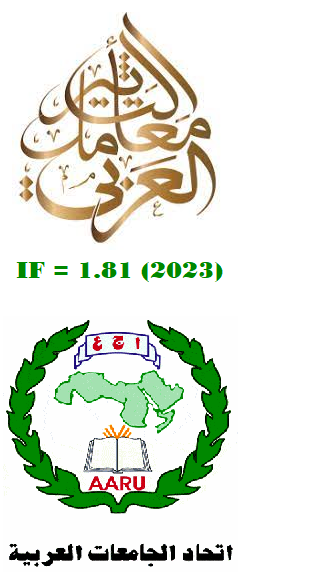Teachers’ Anxiety-relieving Techniques for Academic Success
Cihan University-Erbil, Department of English Language
Abstract
Although it is fairly obvious that student stress and anxiety have a negative impact on students’ academic performance, the role that teachers can play in easing these difficulties is frequently overlooked. The purpose of this study is to discover the techniques employed by teachers to help students who are anxious about speaking English and to determine the effects of those strategies. This study makes use of a qualitative approach. The participants of this study included six lecturers from English Department of Cihan University-Erbil. The obtained data through interview are analyzed descriptively. Peer group and fun activities are two of those techniques that those teachers have used and they could enhance student self-assurance, communication abilities, and collaborative learning. Moreover, relaxing, inspiring, and entertaining are the impact of doing some fun activities by them to alleviate the anxiety level of students.
Downloads
References
Abdulwahid, H.Y. (2023). Teaching and learning phonetics obstacles in EFL classrooms. Cihan University-Erbil. Cihan University-Erbil Journal of Humanities and Social Sciences, 7(1), 22-28.
American College Health Association. (2019). National College Health Assessment III: Undergraduate Reference Group: Executive Summary. Silver Spring, MD. American College Health Association National College Health Assessment. Available from: www.acha.org/documents/ncha/nchaiii_fall_2019_ undergraduate_reference_group_executive_summary.pdf [Last accessed on 2021 Feb 12].
Atas, M. (2015). The reduction of speaking anxiety in EFL learners through drama techniques. Procedia-Social and Behavioral Sciences, 176, 961-969.
Azeez, I., Abbasian, M., & Abdulwahid, H. (2023). Color idioms in English and Arabic: A comparative study. Cihan University-Erbil Journal of Humanities and Social Sciences, 7(1), 91-97.
Bamber, M.D., & Kraenzle Schneider, J. (2016). Mindfulness-based meditation to decrease stress and anxiety in college students: A narrative synthesis of the research. Educational Research Review, 18, 1-32.
Crawford, W.J., McDonough, K., & Brun-Mercer, N. (2019). Identifying linguistic markers of collaboration in second language peer interaction: A lexicogrammatical approach. Tesol Quarterly, 53(1), 180-207.
Daly, J. (1991). Understanding communication apprehension: An introduction for language educators. In: Horwitz, E., & Young, D., (eds.) Language Anxiety from Theory and Research to Classroom Implications. Hemel Hempstead: Prentice Hall International. p3-15.
Dewaele, J.M., & Al-Saraj, T.M. (2015). Foreign language classroom anxiety of Arab learners of English: The effect of personality, linguistic and sociobiographical variables. Studies in Second Language Learning and Teaching, 5(2), 205-228.
Eisenberg, D., Hunt, J., & Speer, N. (2013). Mental health in American colleges and universities: Variation across student subgroups and across campuses. Journal of Nervous and Mental Disease, 201(1), 60-67.
Gass, S.M., & Selinker, L. (1994). Looking at language processes. In: Second Language Acquisition: An Introductory Course. Hillsdale, NJ: Lawrence Erlbaum Associates. p139-164.
Gay, L.R., Millis, G.E., & Airasian, P. (2006). Educational Research: Competencies for Analysis and Applications. 8th ed. Columbus, Ohio: Pearson Merrill Prentice Hall.
Han, T., & Keskin, F. (2016). Using a mobile application (WhatsApp) to reduce EFL speaking anxiety. Gist Education and Learning Research Journal, 12(12), 29-50.
Horwitz, E.K. (1988). The beliefs about language learning of beginning university foreign language students. The Modern Language Journal, 72(3), 283-294.
Horwitz, E.K., Horwitz, M.B., & Cope, J. (1986). Foreign language classroom anxiety. The Modern Language Journal, 70(2), 125-132.
Kitano, K. (2001). Anxiety in the college Japanese language classroom. The Modern Language Journal, 85(4), 549-566.
Koch, A.S., & Terrell, T.D. (1991). Affective Reactions of Foreign Language Students to Natural Approach Activities and Teaching Techniques. New Jersey: Prentice Hall.
Lazarus, R.S., & Folkman, S. (1984). Stress, Appraisal, and Coping. New York: Springer.
MacIntyre, P.D., & Gardner, R.C. (1989). Anxiety and second-language learning: Toward a theoretical clarification. Language Learning, 39(2), 251-275.
MacIntyre, P.D., & Gardner, R.C. (1991). Methods and results in the study of anxiety and language learning: A review of the literature. Language Learning, 41, 85-117.
Morey, T., & Taylor, N. (2019). Understanding how undergraduate students experience and manage stress: Implications for teaching and learning anthropology. Teaching and Learning Anthropology, 2(2), 41-61.
Murphey, T., Falout, J., Fukuda, T., & Fukada, Y. (2014). Socio-dynamic motivating through idealizing classmates. System, 45, 242-253.
Nishino, T. (2008). Japanese secondary school teachers’ beliefs and practices regarding communicative language teaching: An exploratory survey. JALT Journal, 30(1), 27-50.
Numrich, C. (1996). On becoming a language teacher: Insights from diary studies. TESOL Quarterly, 30(1), 131- 153.
Olatoye, R.A. (2009). Students’ test anxiety, motivation for examinations and science achievement in junior secondary schools in Ogun State, Nigeria. International Journal of Psychology and Counselling, 1(10), 194-198.
Oxford, R. (1990). Applying indirect strategies to the four language skills. In: Language Learning Strategies: What Every Teacher Should Know. Boston, MA: Heinle and Heinle. p151-191.
Rivers, D.J. (2011). Politics without pedagogy: Questioning linguistic exclusion. ELT Journal, 65(2), 103-113.
Schwarzer, R. (1986). Self-related cognitions in anxiety and motivation: An introduction. In: Schwarzer, R., (ed.) Self-Related Cognitions in Anxiety and Motivation. Hillsdale, NJ: Lawrence Erlbaum Associates. p1-17.
Shao, K., Yu, W., & Ji, Z. (2013). An exploration of Chinese EFL students’ emotional intelligence and foreign language anxiety. The Modern Language Journal, 97(4), 917-929.
Suwantarathip, O., & Wichadee, S. (2010). The impacts of cooperative learning on anxiety and proficiency in an EFL class. Journal of College Teaching and Learning, 7(11), 51-57.
Tahseen, P., & Raewf, M. (2018). The content analysis of the research papers on language learning strategies. Qalaai Zanist Scientific Journal, 3(4), 904-911.
Toth, Z. (2010). Foreign Language Anxiety and the Advanced Language Learner: A Study of Hungarian Students of English as a Foreign Language. Newcastle, UK: Cambridge Scholars.
Van Batenburg, E.S.L., Oostdam, R.J., van Gelderen, A.J.S., Fukkink, R.G., & de Jong, N.H. (2019). Oral interaction in the EFL classroom: The effects of instructional focus and task type on learner affect. The Modern Language Journal, 103(1), 308-326.
Yan, J.X., & Horwitz, E.K. (2008). Learners’ perceptions of how anxiety interacts with personal and instructional factors to influence their achievement in English: A qualitative analysis of EFL learners in China. Language Learning, 58(1), 151-183.
Yoon, T. (2012). Teaching English though English: Exploring anxiety in nonnative pre-service ESL teachers. Theory and Practice in Language Studies, 2(6), 1099-1107.
Zhang, X. (2019). Foreign language anxiety and foreign language performance: A meta-analysis. The Modern Language Journal, 103(4), 763-781.
Copyright (c) 2024 Marjan Abbasian

This work is licensed under a Creative Commons Attribution-NonCommercial-NoDerivatives 4.0 International License.
Authors who publish with this journal agree to the following terms:
1. Authors retain copyright and grant the journal right of first publication with the work simultaneously licensed under a Creative Commons Attribution License [CC BY-NC-ND 4.0] that allows others to share the work with an acknowledgment of the work's authorship and initial publication in this journal.
2. Authors are able to enter into separate, additional contractual arrangements for the non-exclusive distribution of the journal's published version of the work (e.g., post it to an institutional repository or publish it in a book), with an acknowledgment of its initial publication in this journal.
3. Authors are permitted and encouraged to post their work online (e.g., in institutional repositories or on their website) prior to and during the submission process, as it can lead to productive exchanges, as well as earlier and greater citation of published work (See The Effect of Open Access).









